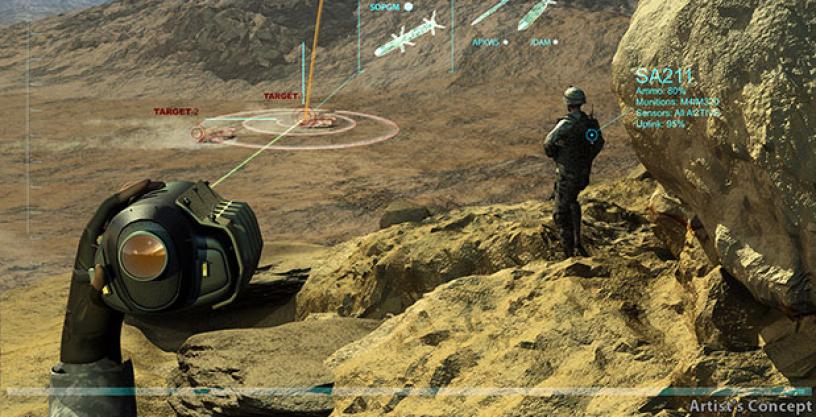
Program Summary
To maintain a decisive tactical advantage in 21st-century combat, warfighters need the ability to safely, rapidly and collaboratively deploy ordnance against elusive mobile targets. Unfortunately, air-ground fire coordination—referred to as Close Air Support or CAS—has changed little since its emergence in World War I. Pilots and dismounted ground agents can focus on only one target at a time and must ensure they hit it using just voice directions and, if they’re lucky, a common paper map. It can take up to an hour to confer, get in position and strike—time in which targets can attack first or move out of reach.
DARPA created the Persistent Close Air Support (PCAS) program in July 2010 to help address these challenges. PCAS seeks to fundamentally increase CAS effectiveness by enabling dismounted ground agents—Joint Terminal Attack Controllers (JTACs)—and combat aircrews to share real-time situational awareness and weapons systems data. The system would enable ground agents to quickly and positively identify multiple targets simultaneously. JTACs and aircrews would then jointly select precision-guided ordnance that best fits each target and minimizes collateral damage and friendly fire. Finally, both parties would authorize weapons deployment.
The program envisions numerous benefits, including:
- Reducing the time from calling in a strike to the weapon hitting the target by a factor of 10, from up to 60 minutes down to just 6 minutes
- Direct coordination of airstrikes by a ground agent from manned or unmanned air vehicles
- Improved speed and survivability of ground forces engaged with enemy forces
- Use of smaller, more precise munitions against smaller and moving targets in degraded visual environments
- Graceful degradation of services—if one piece of the system fails, warfighters would still retain CAS capability
PCAS designs currently include two main components, PCAS-Air and PCAS-Ground. PCAS-Air would be a platform-agnostic, plug-and-play system that would consist of an internal navigation system, weapons and engagement management systems, and high-speed data transfer systems. Based on tactical information, PCAS-Air’s automated algorithms would recommend optimal travel routes to the target, which weapon to use on arrival and how best to deploy it.
PCAS-Air would communicate with JTACs through PCAS-Ground, a suite of technologies enabling improved mobility, situational awareness and communications for fire coordination. Parts of PCAS-Ground have already had field trials that mark some of the first large-scale use of commercial tablets for air-ground fire coordination. From December 2012 through March 2013, DARPA deployed 500 Android tablets equipped with PCAS-Ground situational awareness software to units stationed in Afghanistan. Field reports show that PCAS-Ground replaced those units’ legacy paper maps, dramatically improving ground forces’ ability to quickly and safely coordinate air engagements.
Raytheon is the systems integrator for PCAS going into Phase II. Northrop Grumman Electronics Systems was a co-lead systems integrator for Phase I.
This program is now complete
This content is available for reference purposes. This page is no longer maintained.
